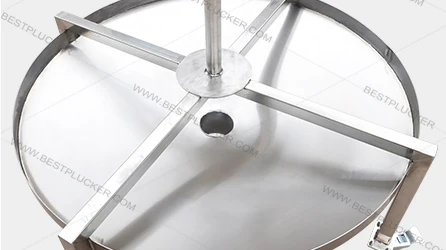Affordable and Efficient Feed Pellet Machines for Sustainable Livestock Farming
Oktoba . 14, 2024 09:37 Back to list
Affordable and Efficient Feed Pellet Machines for Sustainable Livestock Farming
Understanding Feed Pellet Machines The Key to Efficient Animal Feed Production
In the modern agriculture and animal husbandry sectors, the demand for high-quality livestock feed has surged significantly. A crucial component in meeting this demand is the use of feed pellet machines, which have revolutionized how feed is processed and presented to animals. This article explores the importance of these machines, their working mechanisms, and the benefits they offer.
What Are Feed Pellet Machines?
Feed pellet machines are specialized equipment designed to produce animal feed pellets by compressing raw ingredients such as grains, corn, soybean meal, and other nutritional components. The primary goal is to create pellets that are easy for animals to consume, digest, and utilize for optimum growth and production. These machines vary in size and capacity, making it possible to cater to both small-scale farmers and large commercial operations.
How Do Feed Pellet Machines Work?
The operation of a feed pellet machine involves several key processes
1. Ingredient Preparation Before pelleting, raw materials are milled to a fine powder to ensure uniformity. This step is crucial as it affects the final pellet quality.
2. Mixing The powdered ingredients are then mixed with specific additives such as vitamins, minerals, and binders. Proper mixing ensures that every pellet has the same nutritional profile, which is vital for animal health.
3. Pelleting The mixed feed is fed into the pelleting chamber of the machine, where high pressure and temperature are applied. This compression causes the ingredients to heat up and fuse together, forming solid pellets. The size, shape, and hardness of these pellets can be adjusted by changing the die and roller configurations within the machine.
4. Cooling After pelleting, the newly formed pellets are hot and moist. They need to be cooled to reach a stable state. Coolers or air dryers are often used in this step to reduce moisture content and enhance the shelf life of the feed.
feed pellet machines

5. Packaging Finally, the cooled feed pellets are packaged for storage or immediate distribution. Proper packaging helps to protect the pellets from moisture and contamination, which can adversely affect their quality.
Benefits of Using Feed Pellet Machines
Employing feed pellet machines offers numerous advantages
- Improved Feed Efficiency Pelleted feed is easier for animals to consume and digest, leading to better feed conversion rates. This means animals can convert feed into body mass more efficiently, reducing overall feed costs.
- Nutritional Consistency The pelleting process ensures that every pellet contains a uniform distribution of nutrients. This consistency supports better animal health and growth.
- Reduced Waste The compact nature of pellets minimizes feed spillage and waste, making feeding practices more economical.
- Enhanced Palatability Pelleted feeds are generally more palatable to animals compared to loose powders, encouraging higher feed intake.
- Storage and Handling Advantages Pellets take up less space and are easier to handle compared to bulk feed materials. Their durability makes them less prone to damage during transport.
Conclusion
In summary, feed pellet machines are an indispensable asset for anyone involved in animal farming or feed production. By transforming raw ingredients into high-quality pellets, these machines play a vital role in enhancing feed efficiency, nutritional quality, and overall animal health. As the demand for efficient and sustainable animal husbandry practices grows, incorporating advanced feed pellet machines into production processes becomes increasingly important for farmers aiming to maximize productivity and profitability.
-
High Performance Exhaust Fan – Efficient Ventilation Solutions for Home
NewsJun.10,2025
-
High-Quality Gestation Pen for Sows Durable Mobile Pig Pen & Simple Pig Pen Solutions
NewsJun.10,2025
-
High Quality Rabbit Cage Double Tier Designs & Welded Wire Mesh Supplier
NewsJun.10,2025
-
Floating Fish Feed Machine - High Efficiency Floating Fish Feed Extruder for Small Scale Production
NewsJun.10,2025
-
Premium Poultry Housing Solutions Mobile & Commercial Free Range Options
NewsJun.10,2025
-
Industrial FRP Fans Corrosion-Resistant Blades & Centrifugal Systems
NewsJun.09,2025






